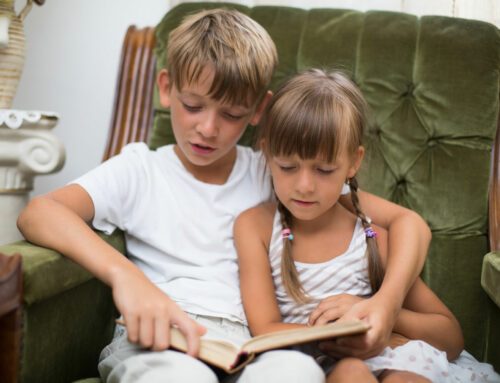By Lea Ann Garfias
Music appreciation and music history are important components of a home school arts education. Regardless of musical talent or background, any parent can incorporate music appreciation into home education. Plus, music offers so many benefits to students!
A student who studies the arts concurrently with history and literature can appreciate the common themes and expressions. With music comprehension comes better discernment in expressing oneself and development of the student’s taste in music.
Since Creation, music has been a natural expression of our language and emotion. The Scriptures are full of examples of God’s people singing in praise and prayer, including the entire book of Psalms.
For centuries in Western cultures, a basic understanding of music has been integral to a healthy liberal arts education. As you can see throughout history, music has represented an expression of understanding and emotions of the times.
Equip Yourself to Teach Music Appreciation in a Homeschool Setting
Unfortunately, many parents find themselves ill-equipped to pass on this tradition to their own children. But, a healthy music education does not need to be expensive, grueling or professional.
Music is such a natural part of our innate, God-given communication ability that most infants naturally burst into sing-song babbling in their cribs or during play. Moving up the age scale, young children delight in singing and listening to songs, including classical music!
Families who enjoy music together as a part of their daily lives will find that music education happens naturally within the home. Adding music appreciation to daily instruction is as easy as listening together.
- During the day, play classical music recordings, classical radio stations or classical online playlists.
- Listen to music in the morning while doing chores, in the van while running errands, during evening cleanup, while cooking, and when getting ready for bed.
As teens begin to develop their own affinity for pop music, teach them that healthy music—like healthy food—is a regular staple of our auditory diet. Setting appropriate limits like “Mom controls the music from 8-5” or “pop music on Saturday only” can help build healthy habits. With regular daily exposure to high-quality sacred and classical music, students learn to appreciate the good stuff.
How to Reinforce Healthy Music Habits for Homeschoolers
Next, add thoughtful discussion to what students are hearing. With the little ones, it may be asking:
- “What instruments do you hear?” Look up orchestras playing music from movies that your child loves.
- “Can you pretend to play the flute while you listen?”
As students become older, appropriate questions could be:
- “Do you know which country Mozart is from?”
- “Do you know what world events occurred while Mozart was writing and performing?”
After a while, students begin to grasp the timeline of musical periods such as Baroque, Classical, Romantic, and 20th century, and how these composers reveal the themes of each historical time.
Another great strategy for teaching music appreciation is to vary the music choices. When some parents think of classical music from Mozart or Beethoven, they imagine dainty stringed instruments. But, there is so much more!
The bombastic canons of Tchaikovsky, the fun folk music of Copeland and the gritty dances of Bartok are classical gems that inspire the imagination. Some students enjoy the soothing Impressionists, while more studious academics may prefer the orderly patterns of Bach.
Allowing students to experiment with a variety of works gives them an opportunity to use critical thinking to define their preferences.
Teach Music Appreciation at Live Concerts
One of the most exciting ways to instill a love of music in your student is to attend live music events. Music is fun to listen to, but it becomes a different experience when a group of instrumentalists and vocalists perform intricate pieces right in front of your eyes.
Seek out concerts and live music events in your area, especially free concerts. These wonderful opportunities typically take place in your local park and offer crowd-pleasing selections in a casual, child-friendly environment. Plus, meeting professional musicians enhances a student’s understanding of the art.
After local concerts, approach a musician for a quick conversation. Encourage students to ask the musician why he or she chose that profession, how long they trained and strategies for keeping skills sharp. Inquire about taste in music, favorite composer and future musical goals. These discussions help students see the human aspect behind the craft.
Finally, consider group or private music instruction such as piano lessons, instrumental instruction and choir training. Performing in groups and memorizing pieces are wonderful brain exercises that boost creativity, problem-solving and memory skills!
These ideas are an excellent way to develop an appreciation not only for music, but also for the discipline, skill and training it takes to make beautiful music.
Yes, homeschool parents can definitely provide an excellent music education at home. With listening skills and willing hearts, your entire family can enjoy God’s gift of music together for many years to come.
***
Lea Ann Garfias believes there is enough coffee in the world to make even dreadful Thursdays tolerable. In her book, Rocking Ordinary (New Leaf Press), Lea Ann helps ordinary moms realize their extraordinary influence. When she’s not home schooling her four children, cheering at soccer matches or performing the violin, she’s passed out asleep. You’ll find evidence of her existence at her website lagarfias.com.



